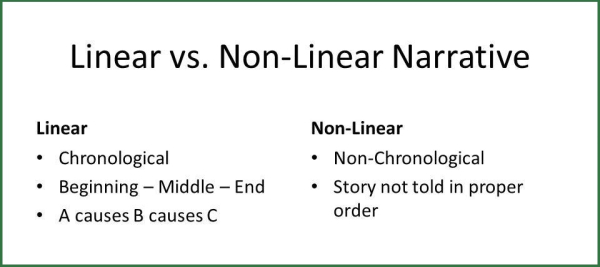By Sajeeb Sarker
Linear and Non-linear Storytelling
Media School September 2, 2024

In a linear narrative, the story is told in chronological order. In other words, a linear plot is a type of narrative structure in which events unfold in a chronological and sequential order.
We can say that a linear storytelling follows this simple order of events:
Beginning → Middle → End
In a linear narrative, the storyline usually follows a cause-and-effect relationship and each event directly leads to the next.
Famous novel ‘The Old Man and The Sea’ by Ernest Hemingway is a great example of linear narrative structure. In this novel, the events are told in a chronological order – just as they happen in real life. In this novel, the story follows the sequence of the old fisherman Santiago's journey out to sea, his struggle with the giant fish marlin, and his return to home – all in the order these events actually occur.
On the other hand, in a non-linear storytelling, the story does not unfold in a chronological order. Rather, non-linear storylines usually adopt techniques like flashbacks, flash-forwards, multiple points of view, or a non-sequential structure. Such techniques are used to rearrange the order of events in a story.
In a non-linear narrative, there is no presence of direct causality pattern of the events featured in the story.
Now, let us summarize:
A linear plot has a beginning, middle, and end and they are presented chronologically. But, a nonlinear plot contains the same components (beginning, middle, and end) but the order they are presented in is not chronological.
Famous examples of non-linear narratives are the Mahabharata, Arabian Nights and Homer's Iliad.


